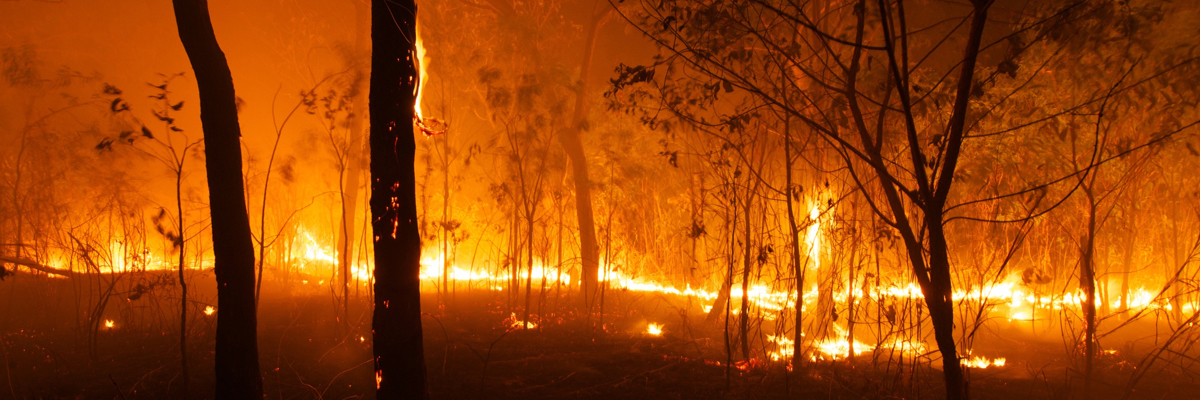Safeguarding Your Home: The Crucial Role of a BAL Report in Bushfire Preparedness
Safeguarding Your Home: The Crucial Role of a BAL Report in Bushfire Preparedness
Blog Article
Just How BAL Record Impacts Shrub Fire Protection Steps
In the world of bush fire defense, the Building Assault Degree (BAL) record stands as a vital device that significantly influences the security and durability of residential properties in fire-prone locations - BAL Report. The impact of a BAL evaluation expands far beyond plain paperwork; it functions as the cornerstone for determining the proper construction criteria and fire security steps necessary to mitigate the risks posed by bushfires. As neighborhoods grapple with significantly severe fire periods, understanding just how the BAL record forms these safety procedures ends up being vital for home builders, house owners, and policymakers alike
Comprehending the Bushfire Assault Level

Value of BAL Record Assessment

Furthermore, the BAL report evaluation acts as a fundamental action in adhering to legal commitments and requirements connected to bushfire protection. Local councils and authorities usually mandate the entry of a BAL record as component of the planning and building authorization process to make certain that residential or commercial properties are effectively protected versus bushfire threats. Failing to perform a detailed BAL report evaluation can cause inadequate protection actions, leaving residential or commercial properties susceptible to devastating bushfire incidents.
Construction Standards Based on BAL
A detailed understanding of the Bushfire Strike Degree (BAL) makes it possible for building owners to execute building criteria customized to their particular risk account. Building standards based upon BAL are vital in alleviating the impact of bushfires on properties. The BAL rating categorizes the possible risk a residential or commercial property faces throughout a bushfire on a scale from BAL-Low to BAL-FZ (Fire Zone) Each BAL degree represents certain building requirements laid out in the Australian Common AS3959-2018 Building And Construction of Structures in Bushfire-Prone Areas. Buildings categorized as BAL-Low may just require standard procedures such as getting rid of particles and keeping gardens, while those in higher BAL groups require more robust steps like coal screens, fire-resistant products, and secured windows. Following these building and construction requirements not just improves the architectural resilience of the residential property however also boosts the general safety and security of homeowners during a bushfire event. Property proprietors need to meticulously consider their BAL rating and comply with the matching building standards to appropriately Get More Information safeguard their residents and homes.
Applying Fire Defense Measures
With the foundation of building and construction criteria based upon Bushfire Strike Level (BAL) in position, the emphasis now moves towards the useful application of fire protection steps to fortify buildings versus bushfire hazards. Applying fire defense actions includes a mix of passive and energetic methods to improve the durability of structures in bushfire-prone locations. Easy measures include making use of fireproof building products, setting up ember guards on vents, sealing voids in roofings and wall surfaces, and preserving a clear room around the home without combustible vegetation. Energetic steps incorporate having firefighting equipment readily available, such as hoses and water pumps, in addition to developing a defendable space around the building by clearing greenery great site and having a properly maintained garden. Additionally, establishing a discharge strategy and making sure all homeowners know emergency treatments are crucial components of efficient fire security actions. By incorporating both passive and active techniques, residential properties can significantly minimize their susceptability to bushfire cases and enhance the security of owners.
Safeguarding Residences Against Bushfires
Efficiently safeguarding homes against the destructive effects of bushfires calls for a aggressive and comprehensive approach to fire security actions. House owners staying in bushfire-prone areas must focus on the execution of different strategies to improve their building's durability versus wildfires. One essential element is developing a defensible room around the home by preserving a clear zone complimentary of combustible products. This consists of frequently trimming vegetation, removing dead plants, and ensuring a secure range between trees and frameworks. Installing fire-resistant roof products can also considerably minimize the risk of ash attacks and straight flame get in touch with. In addition, securing gaps and vents to avoid cinder breach, in addition to including fire-resistant doors and home windows, can help strengthen the home's protection versus bushfires. Buying a trusted water source, such as a well-maintained automatic sprinkler or a devoted water storage tank, is crucial for supplying water during fire emergency situations - BAL Report. By welcoming a proactive position and incorporating these protective procedures, house owners can substantially boost their possibilities of protecting their homes against bushfires.
Verdict
To conclude, the Bushfire Strike Degree (BAL) record plays an essential duty in establishing the necessary defense measures against bushfires. By evaluating the BAL, building requirements can be customized to alleviate the dangers and guarantee the security of homes in fire-prone areas. Carrying out fire defense actions based upon the BAL report is important in protecting residential or commercial properties from possible bushfire dangers. It is critical for home owners to prioritize BAL assessments and comply with recommended building standards to enhance bushfire strength.
In evaluating bushfire danger to buildings, understanding the discover this info here Bushfire Attack Level (BAL) is a vital part for applying effective security actions. In general, a clear understanding of the Bushfire Assault Degree is vital for implementing appropriate protection steps and mitigating the effect of bushfires on residential or commercial properties.

Report this page